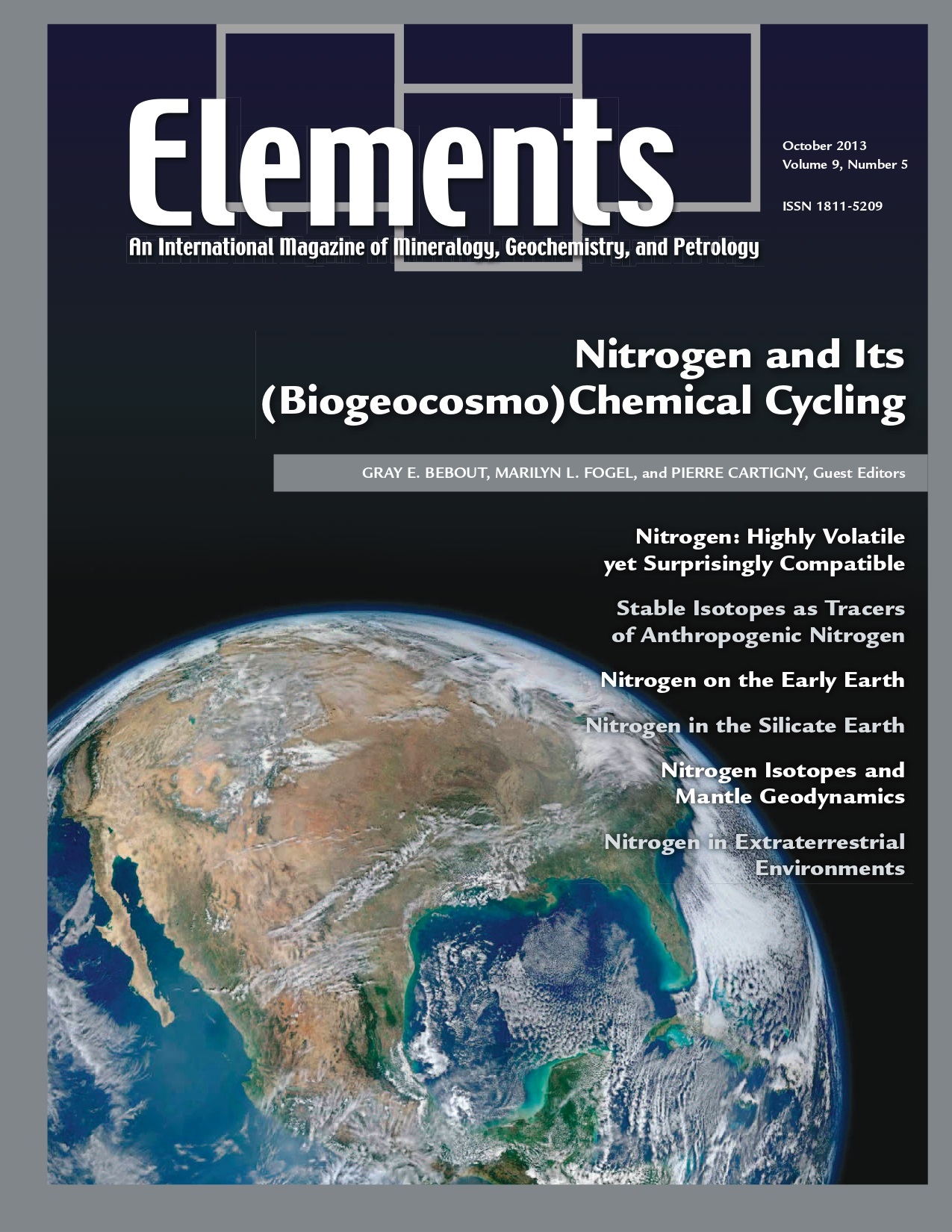
Granitic Pegmatites, August 2012, Vol. 8, No. 4
June 28, 2024
Kaolin, June 2014, Vol. 10, No. 3
June 28, 2024Nitrogen And Its (Biogeocosmo) Chemical Cycling, October 2013, Vol. 9, No. 5
$20.00
Nitrogen is the most abundant element in Earth’s atmosphere and a key component of the biosphere. It is also a critical part of the surface/near-surface cycling of nutrients, thus directly impacting our lives.
Nitrogen And Its (Biogeocosmo) Chemical Cycling
October 2013, Vol. 9, No. 5
Nitrogen is the most abundant element in Earth’s atmosphere and a key component of the biosphere. It is also a critical part of the surface/near-surface cycling of nutrients, thus directly impacting our lives. Changes in the biogeochemical cycling of nitrogen through Earth’s history could reflect fundamental changes in its pathways from inorganic to biological reservoirs in response to change in the environment (e.g. oxygen fugacity in the atmosphere and oceans). Recognition of the importance of nitrogen to life on Earth, and likely elsewhere in the Solar System, has led to the mantra “Follow the Nitrogen” as one vehicle for focusing efforts in the search for extraterrestrial life. Nitrogen serves as a useful tracer of the transfer of “organic” signatures into the deep Earth (in records preserved in metamorphic and igneous rocks and in volcanic gases and rocks). It has been speculated that biological fixation of nitrogen and storage in rapidly forming continental crust has led to drawdown of nitrogen from the early-Earth atmosphere, strongly influencing the chemical evolution of the atmosphere and related surface conditions.
Why You’ll Love Elements Magazine:
- Expert Contributors: Articles written by renowned researchers in the field of geoscience.
- Engaging Content: Join a community of readers who are passionate about Elements.
- Exceptional Quality: Each issue is printed on high-quality paper with stunning visuals and detailed illustrations that bring complex scientific concepts to life.
Order your copy of the October 2013 issue of Elements magazine today and explore nitrogen and its (biogeocosmo) chemical cycling.
Related products
-
Carbon Dioxide Sequestration, October 2008, Vol. 4, No. 5
$20.00Storage of carbon in the subsurface involves introduction of supercritical CO2 into rock formations beneath the surface of the Earth, typically at depths of 1000 to 4000 meters. Although CO2 is a relatively benign substance, the volume being considered is large.
-
On The Cutting Edge: Teaching Mineralogy, Petrology, And Geochemistry, April 2007, Vol. 3, No. 2
$20.00New advances in research on learning have important implications for teaching mineralogy, petrology, and geochemistry. Effective instructional practices are increasingly student centered, address diverse student learning styles, and employ a variety of active-learning strategies.
-
Deep Earth And Mineral Physics, June 2008, Vol. 4, No. 3
$20.00The field of high-pressure mineral physics is central to our understanding of the Earth’s interior and its evolution. It is also a field that is rapidly advancing.




